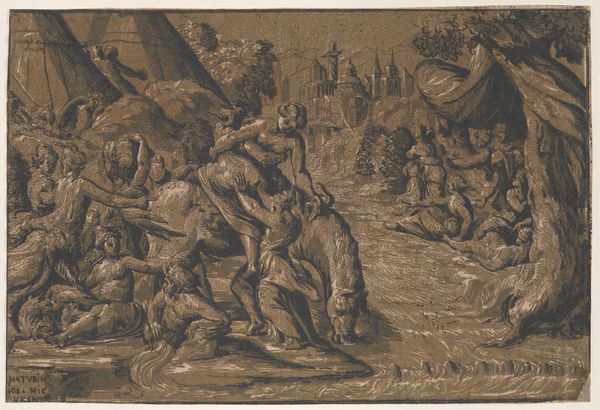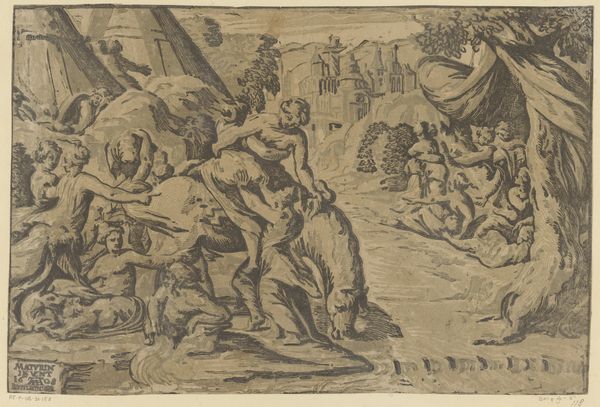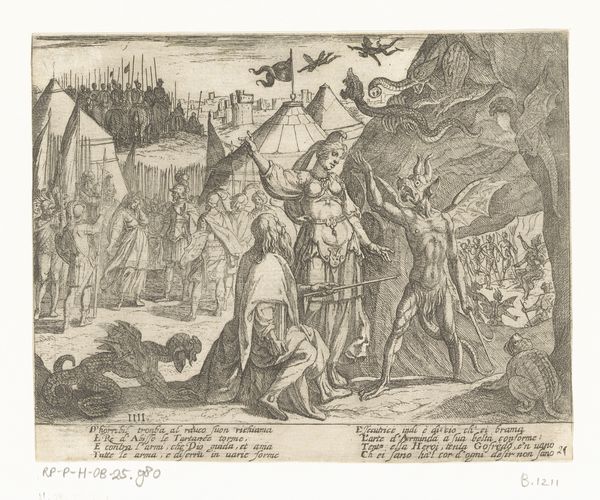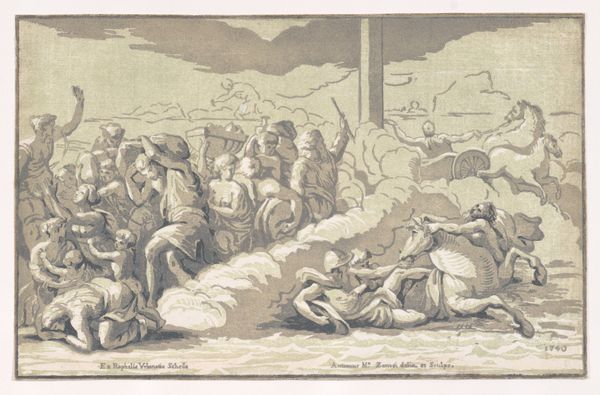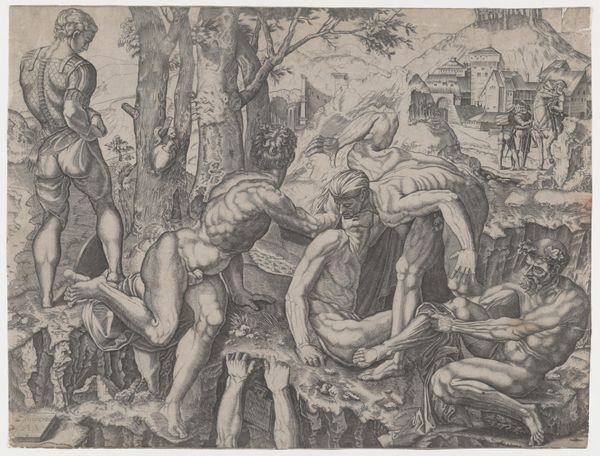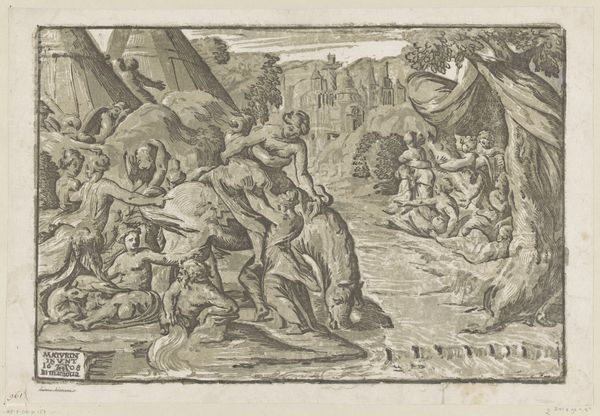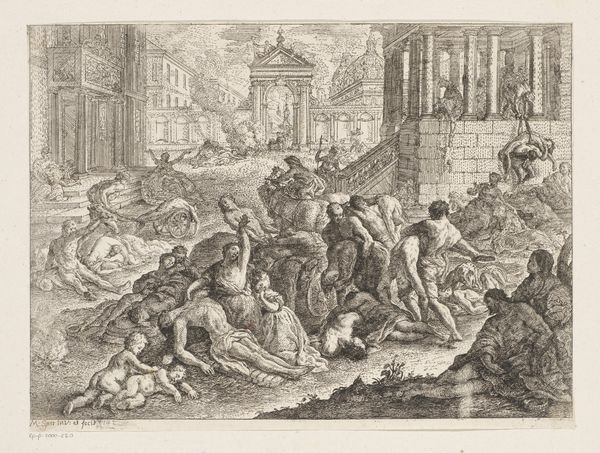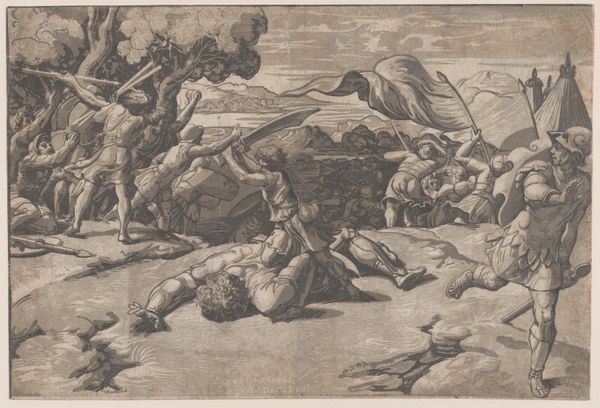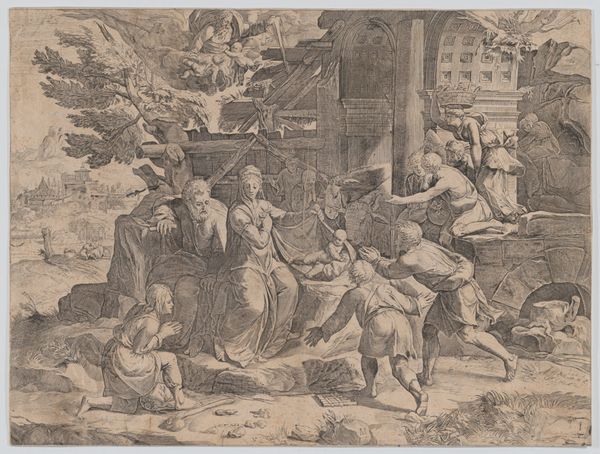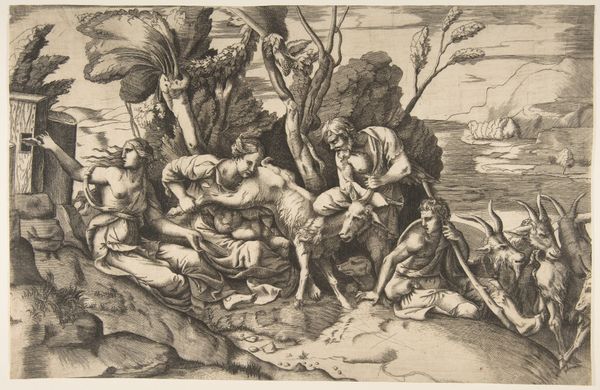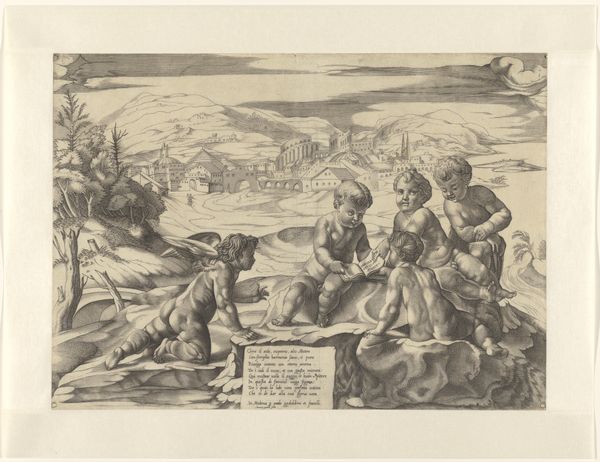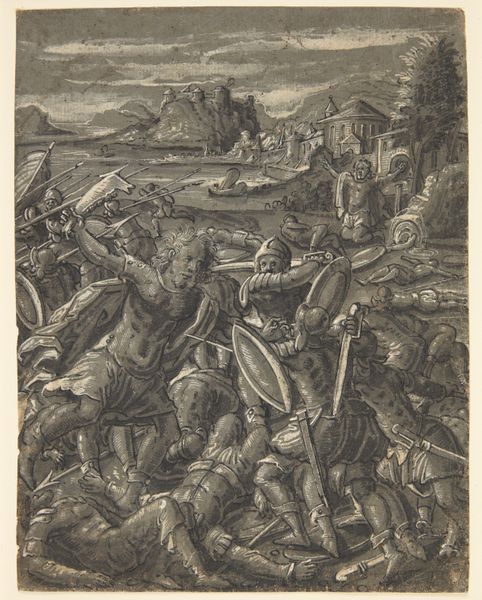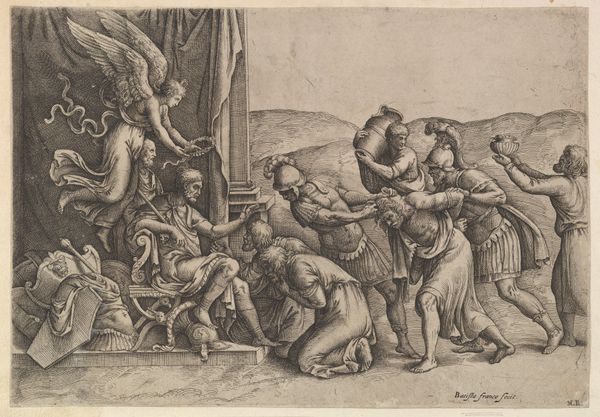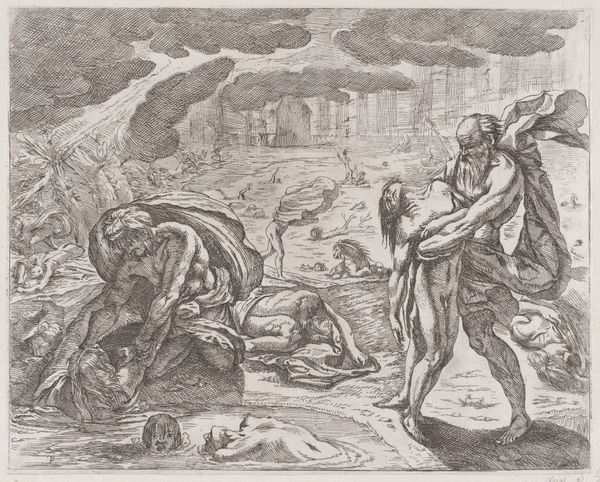
drawing, print, etching, engraving
#
drawing
#
ink drawing
#
pen drawing
# print
#
etching
#
11_renaissance
#
history-painting
#
engraving
Dimensions: Sheet: 9 1/2 × 15 9/16 in. (24.2 × 39.6 cm)
Copyright: Public Domain
Curator: Here we have "The Escape of Cloelia," made sometime between 1540 and 1550, crafted by Niccolò Vicentino. The artwork utilizes techniques of etching, engraving and printmaking, resulting in a detailed image in ink. Editor: Immediately, the image evokes a sense of urgent flight and watery chaos, doesn't it? The tonal range achieved with the printing techniques, particularly the depth in the shaded areas, create a dramatic effect. What story is being told? Curator: It depicts the Roman heroine Cloelia, who was given as a hostage to Lars Porsena, the Etruscan king. She escaped the Etruscan camp, leading a group of Roman virgins across the Tiber River to safety. This act became symbolic of Roman courage and virtue. Editor: Ah, symbols of courage… note how the horse, despite drinking, still bears the burden of the woman and child. A classical symbol of nobility harnessed in service. Water, of course, representing cleansing or in this case perhaps deliverance, surrounds the figures, creating movement and tension. Are we meant to see these women as archetypes of Roman strength? Curator: Indeed, the act itself cemented Cloelia's place in Roman lore. Consider the means of production here: engraving and etching allowed for wider dissemination of the story, which aided in cementing her legendary status in early modern society. It’s fascinating how a single print could play a part in constructing historical memory. The layering of the materials adds complexity, doesn’t it? Editor: Absolutely, and look at the postures – the confident stance of Cloelia versus the implied weakness or weariness of the figures on the left. Notice too, that the city in the background isn't Rome! An artist choice to signal… what? An idealized destination? A sense of generic 'civilization' in opposition to untamed nature, represented by the wild looking people? Curator: Interesting idea! To see this history presented as a printed image also asks a set of interesting questions regarding what this image would have been for and who was its intended consumer, while playing into a heroic narrative central to a burgeoning Roman identity at this time. Editor: Considering all that we've discussed—the symbols, the implied narratives, and social status— this print speaks volumes, even today. Curator: I concur. It certainly highlights the potency of historical image-making through the confluence of materials and message.
Comments
No comments
Be the first to comment and join the conversation on the ultimate creative platform.
